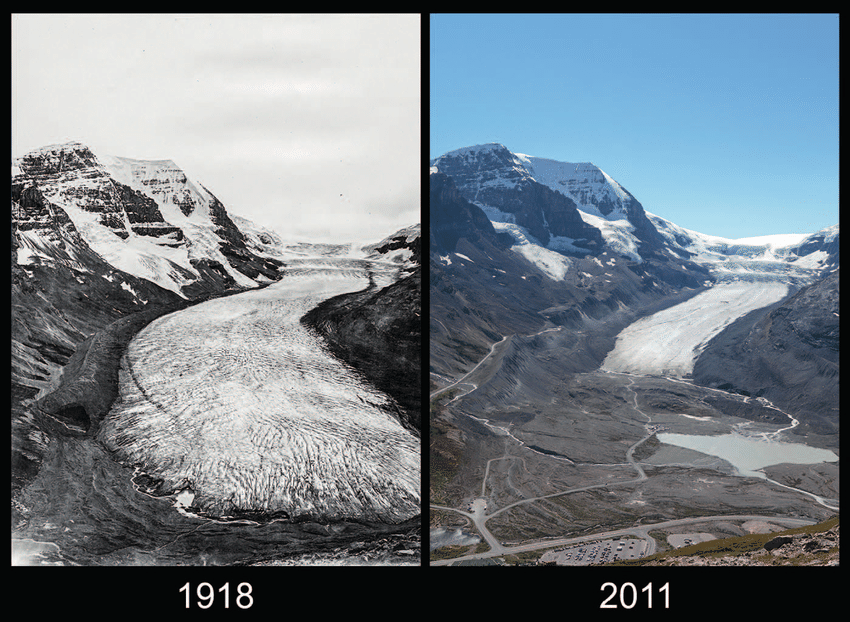
There is no question, it seems to me, that Earth’s climate is changing. (The question of whether, or how much, human action is causing that climate change is, of course, a much more controversial one.) Glaciers around the world — with the apparent and rather mysterious exception, I’m told, of two particular glaciers in the Himalayas — are shrinking. My wife and I could plainly see the difference in the Athabasca Glacier (at the Columbia Icefield in Jasper National Park) since our last visit to it some twenty-plus years ago. It’s been receding at roughly five meters annually — i.e., about sixteen feet per year — for the past century and a quarter.
But that raises an interesting question, in my mind at least: Is the glacier’s continual shrinkage since roughly 1895 really attributable to human action? The area of Jasper National Park is still very remote today. But it was much more so in the waning years of the nineteenth century. England was industrialized, or industrializing, at the time. That’s true. But could England’s industrial pollution at the time really have caused Athabasca to recede? And how industrialized was North America then? And northwestern North America, in particular? Scarcely at all, I think. Was it enough to melt glaciers in the Canadian Rockies? I would need to see evidence on that point.
And another thought occurred to me while visiting the Columbia Icefields. The Athabasca Glacier is estimated to be about 15,500 years old. So there was a time when it didn’t exist — and that was a time millennia before humans even dreamed of “industrial processes.” (In fact, according to current scientific thinking, the first peopling of the Americas only occurred between 13,200 and 15,500 years ago, meaning that, if there were people in North America when the Athabasca Glacier began to form, they were very, very few and their effect on the environment was essentially nil.) We’re worried by climate change, of course, and justifiably so. But climate change is a constant. Earth’s weather and climate have always been changing. Obviously, though, we should make every effort to limit human causes for it — or, perhaps better, to consider very consciously and deliberately how and whether we want to influence Earth’s climate.
Posted from Canmore, Alberta, Canada










